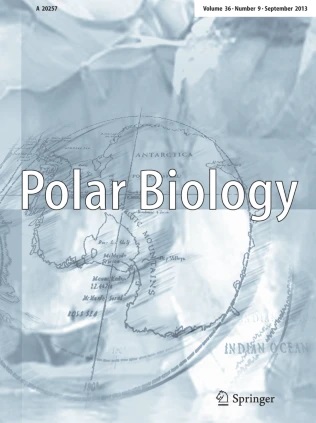Ver ítem
- xmlui.general.dspace_homeCentros e Institutos de InvestigaciónCICVyA. Centro de Investigación en Ciencias Veterinarias y AgronómicasInstituto de Microbiología y Zoología AgrícolaArtículos científicosxmlui.ArtifactBrowser.ItemViewer.trail
- Inicio
- Centros e Institutos de Investigación
- CICVyA. Centro de Investigación en Ciencias Veterinarias y Agronómicas
- Instituto de Microbiología y Zoología Agrícola
- Artículos científicos
- Ver ítem
Diversity and abundance of free-living nematodes from Carlini Station, 25 de Mayo/King George Island, Antarctica: a case study in pristine and disturbed soils
Resumen
The Antarctic continent hosts life forms specially adapted to the extreme climatic challenges. Among these organisms are nematodes, key organisms in the cycling of nutrients in soil food webs. These organisms are bioindicators of environmental disturbances, making their study essential for assessing the impact of human activity in this unique ecosystem. The Carlini Station and the Antarctic Specially Protected Area 132 on the 25 de Mayo/King George
[ver mas...]
The Antarctic continent hosts life forms specially adapted to the extreme climatic challenges. Among these organisms are nematodes, key organisms in the cycling of nutrients in soil food webs. These organisms are bioindicators of environmental disturbances, making their study essential for assessing the impact of human activity in this unique ecosystem. The Carlini Station and the Antarctic Specially Protected Area 132 on the 25 de Mayo/King George Island, Antarctica, has seen limited investigation of free-living soil nematodes. This study aimed to analyze free-living nematode communities in pristine soils and anthropic-intervened soils in the Carlini Station area. Nematodes were extracted from soil samples and morphologically identified at the genus and family levels to calculated ecological indices to assess nematode community structure. Ecological indices (abundance, maturity, enrichment, and soil food structure) were calculated and their values were compared between anthropic and pristine sites using the ANOSIM, SIMPER, and ANOVA statistical tests. Additionally, using molecular analysis, a phylogenetic study was conducted. The study identified four nematode genera, including Plectus spp., Calcaridorylaimus spp., Eudorylaimus spp., and Coomansus spp., with Plectus spp. being the most abundant and widely distributed. Anthropic sites had lower maturity and higher enrichment values, indicative of disturbance, while pristine sites exhibited higher maturity and structure values, suggesting a healthier soil food web. These results suggest that anthropic intervention disrupts nematode communities and represent a significant contribution to the understanding of free-living nematode communities in Antarctica.
[Cerrar]

Autor
Salas, Augusto;
Fusaro, Bruno;
Rusconi, José Matías;
Rosales, Matías;
Balcazar, Darío;
Achinelly, Fernanda;
Chaves, Eliseo;
Sauka, Diego Hernan;
Ruberto, Lucas;
Ansaldo, Martín;
Fuente
Polar Biology 47 : 73-83 (January 2024)
Fecha
2024-01
Editorial
Springer
ISSN
1432-2056
0722-4060
0722-4060
Formato
pdf
Tipo de documento
artículo
Palabras Claves
Derechos de acceso
Restringido
 Excepto donde se diga explicitamente, este item se publica bajo la siguiente descripción: Creative Commons Attribution-NonCommercial-ShareAlike 2.5 Unported (CC BY-NC-SA 2.5)
Excepto donde se diga explicitamente, este item se publica bajo la siguiente descripción: Creative Commons Attribution-NonCommercial-ShareAlike 2.5 Unported (CC BY-NC-SA 2.5)


